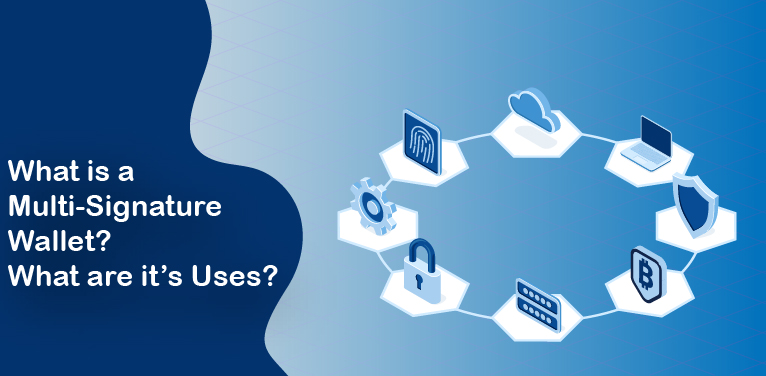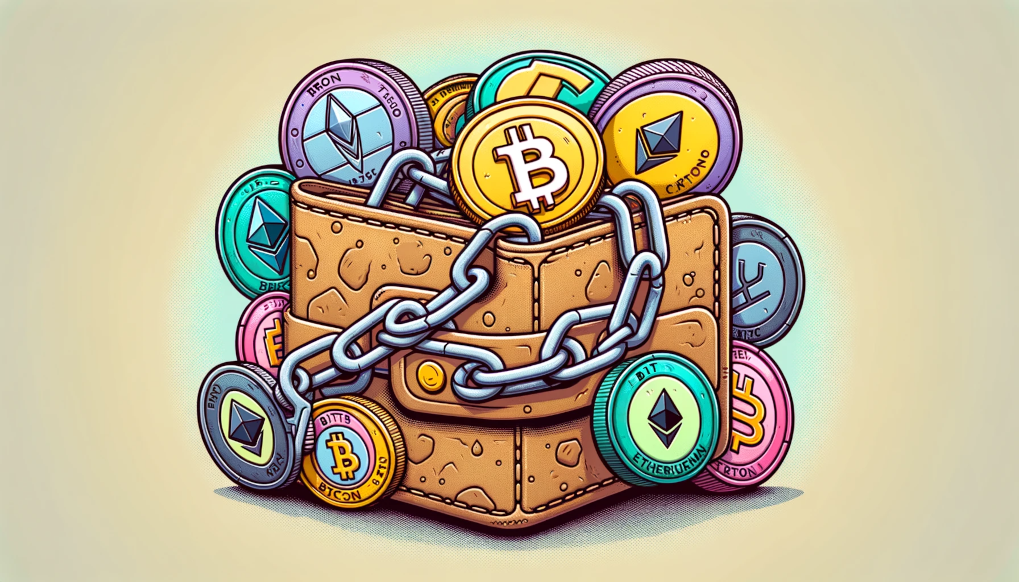What is a Multisig Wallet: The Most Comprehensive Guide in 2024

Every now and then, every crypto user encounters a phrase like “Store your bitcoins in a multisig wallet.” But what exactly is a multisig wallet, and why should one store their hard-earned coins in this type of wallet in 2024? Let's find out!
Comparing Singlesig Wallets to Multisig Wallets
Traditional single-signature wallets require just one signature to initiate a transaction. Each signature is created by a so-called “private key,” which is often referred to as a mnemonic, seed words, seed phrase, or passphrase. In simple terms, this is something that allows the owner of a Bitcoin or Ethereum address to create a signature for a transaction, ensuring others can verify it was indeed created by the real owner of the address.
A multisignature wallet is a different type of Bitcoin or Ethereum address, where multiple individuals are required to put their signatures to approve a transaction. This wallet type lists all co-owners, and everyone can confirm that each signature has been placed by one of the authorized wallet owners. Multisig wallets are particularly useful when you need to manage coins with a business partner, a family member, or in situations where there's a concern about the security of a single private key. By storing your crypto in a multisig wallet, the risk of loss or theft is significantly reduced since stealing just one private key won't be enough to access the funds.
Remember the story of the person who accidentally threw away a hardware wallet containing the private key to a Bitcoin address with 10,000 bitcoins? If those bitcoins had been stored in a multisig wallet, the outcome would have been markedly different. Multisig wallets provide an extra layer of security and peace of mind, especially in situations where large sums are involved or multiple parties have a stake in the assets.
Multisig Wallet Schema and Its Notation
There's another very important feature that sets multisig wallets apart from singlesig wallets — the multisig wallet schema. This feature allows you to create a wallet with multiple owners, let's say 3, where any 2 of them can approve a transaction. With such a setup, even if one of the owners becomes unavailable, the coins remain accessible. Consider a scenario where 3 business partners jointly hold Bitcoin, and one of them goes on holiday to a paradise island with no internet access. The remaining owners can still sign a transaction and continue business operations. For a single holder, this feature can be extremely useful too. You can create a wallet that is controlled by any 2 out of 3 “owners,” and if you lose one of your keys, you will still be able to access your Bitcoins.
You may often hear people saying, “create a 2-of-3 multisig” or “this is a 3-of-5 multisig.” So, what does 2-of-3 and 3-of-5 mean? As we've explained before, a 2-of-3 schema means there are 3 owners of the wallet, and any 2 of them must put their signatures to approve a transaction. Conversely, 3-of-5 means there are 5 owners, and any 3 of them need to provide their signatures for transaction approval. The general notation is M-of-N, where N denotes the total number of wallet owners, and M denotes how many are required to provide signatures.
Why Multisigs Are Not So Popular
It appears that multisig wallets offer only benefits, so why aren't they more popular? Why aren’t they widely available? The flip side of the multisig story is that they require more technical understanding for correct operation compared to singlesig wallets. Moreover, users often need a good grasp of specific implementations.
For reference, a Bitcoin multisig wallet is an offchain wallet, typically recognized by the address's first letter, which is always “3”. Creating a Bitcoin multisig wallet is relatively easy – all that future owners need to do is provide their public keys, which are a form of the wallet's address. When someone wants to send bitcoins from this wallet, they create a transaction and request other owners to sign it individually. Once enough signatures are gathered, this transaction is then broadcasted to the network.
Conversely, Ethereum multisig wallets operate completely differently – one must either find or write a smart contract and deploy it to the Ethereum network. Deployment essentially involves creating this smart contract on the Ethereum network and listing all the owners within this contract, along with the wallet’s features. When someone wants to send Ether from this wallet, they must ask the owners to call this smart contract with a specific transaction, and once the threshold is reached, the last signature releases the funds.
The operational process of multisig wallets varies significantly across different blockchains. Another caveat is the cost of operating a multisig wallet, which is always much higher than that of a singlesig wallet. For Bitcoin, the cost difference can be drastic; sending a multisig transaction might cost up to $100 more than a singlesig transaction during times of high network load, and this cost increases with the number of owners. For Ethereum, the cost difference between singlesig and multisig transactions is similar, but it escalates with the complexity of the smart contract’s features.
Another factor that decreases the popularity of multisig wallets, especially within the Ethereum community, is that some DeFi protocols protect themselves from such wallets. This is an unfortunate consequence of protocol developers' attempts to shield their systems from arbitragers who create specially crafted smart contracts to call different DeFi protocols simultaneously and capitalize on price differences.
All these factors contribute to a reduced user base for multisig wallets, leading to their deprioritization in the eyes of wallet providers despite the significant advantages they offer.
MPC Multisig Technology Makes Multisigs Very Attractive
Fortunately, technology is evolving, and new advancements are emerging. This is also true for multisig wallets. Several years ago, there was a small revolution in the world of cryptography. A new algorithm allowed multiple owners to jointly create a single signature, blending the traditional concepts of singlesig and multisig wallets as explained in the previous section. It holds all the properties expected from a Bitcoin multisig wallet and provides all the advantages of a singlesig wallet.
This algorithm is known as threshold signatures, often referred to as MPC (Multi-Party Computation). To simplify, it allows multiple owners to each create only a part of the private key and then generate a single signature per transaction. This approach revolutionized the blockchain world, as it dramatically reduces the costs of operating a multisig wallet and standardizes the operation process across all chains. So, MPC multisigs operate identically for Bitcoin, Ethereum, Tron, and many other blockchains. Thanks to MPC technology, users need to learn how to create a multisig wallet only once. The process for creating a multisig wallet on another chain will be exactly the same.
MPC multisig wallets are also much more cost-effective to operate. As mentioned earlier, Bitcoin multisig transactions cost more with an increasing number of owners, and Ethereum multisig costs escalate with the complexity of multisig wallet features. However, transactions with MPC multisig wallets cost the same, regardless of the number of owners, and they offer the most comprehensive set of features. Such multisigs can support any type of asset, even those yet to be developed, and can interact with any smart contract using standard web3 integration.
Another significant advantage is that unlike traditional multisig wallets, MPC multisig wallets protect the privacy of the owners. This is especially important when wallet owners prefer not to disclose their association with a particular multisig and don't want others to learn of this association merely by looking at the blockchain.
MPC Multisig Wallet
There are very few wallets that offer such advanced technology to people. Often, developers prefer to sell their innovations to crypto companies as a form of self-custodial service. In doing so, they charge their B2B clients a substantial amount for the service, which is why this technology remains relatively unknown to a broad retail audience — simply because there are not many public wallets that provide and popularize it.
Recently, our team decided that it is unfair for such groundbreaking technology to be hidden from crypto users. We believe that the entire crypto community will benefit once MPC multisig wallets become well-known and popular. Therefore, we have developed a wallet application that offers multisig wallets across multiple chains. We have focused intensely on delivering the best user experience, making it as convenient and user-friendly as possible.
This solution is called TotalSig wallet, and it supports MPC multisig wallets on Bitcoin, Ethereum, Tron, and many other chains. It enables users to manage ERC20, BEP20, TRC10, and TRC20 tokens, NFTs, and interact with smart contracts (Web3). We are actively working on adding new blockchains, expanding to new platforms, and introducing new features. If you are eager to experience the future, need to operate a company wallet, or are looking to enhance your own crypto security with a 2FA setup, check out the TotalSig wallet and let us know your thoughts. Your feedback is invaluable to us.
Additionally, there are a few mobile and desktop multisig wallets out there, each with its own set of features and limitations, offering varying levels of user experience. For a curated list of some of these wallets, you can check out our recommendations here.


